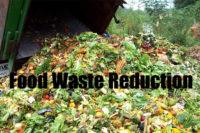TECH FLASH
Food safety, productivity need fuel robotic innovations
Increased productivity, reduced costs and improved food and worker safety continue to push automation and robotics higher on food and beverage manufacturers’ priority list.

Robots have evolved from being used primarily for end-of-line palletizing operations due to their strength, payload capacity and tireless repetitive motion to nimbler, more versatile machines capable of handling primary and secondary packaging tasks. Now, manufacturers are using robots on the processing line. These robots are frequently offered with a clean design that prevents food particle retention and is resistant to bacteria growth.
These newer robotic technologies have the advantage of being able to operate around the clock without compromising performance due to fatigue, injury or motivation. For example, in the meat and poultry industry, robots are now being used for delicate operations such as deboning poultry and carving meat. The technology is more accurate, producing less waste and eliminating ergonomic injuries.
In addition to productivity gains, processors are looking at increased automation and robotics to comply with the stringent requirements of the Food Safety Modernization Act (FSMA). For instance, robots cannot transfer pathogens that cause foodborne illnesses because they are not exposed to external environmental factors.
But for robots to operate in a food manufacturing facility, they must be designed to withstand the rigors of sanitary food processing operations such as harsh washdown, high-pressure environments. Fully enclosed gearboxes, servo motors and cables, combined with stainless steel finishes and round, sloping surfaces, allow robots to be automatically cleaned and disinfected without disassembly.
Food manufacturers’ desire to implement robots on their lines is compelling robot manufacturers to incorporate sanitary designs. New robots offer smoother surfaces, without angles or corners where bacteria can be trapped, and tighter seals that lock out contaminants for washdown, according to the Trends in Robotics Market Assessment Report published by PMMI, the Association for Packaging and Processing Technology. According to the study, although robots remain underutilized on processing lines, the future of robots being used this way is looking up, as more than half of those surveyed expect to increase their use in the coming years.
This increase will likely be dependent on the workforce. Perhaps the greatest challenge the food industry faces in implementing automation and robotics is finding enough engineers to support the adoption of advanced manufacturing technologies. To assist in this effort, PMMI has developed the PMMI Mechatronics Certification Program. This industry-developed certification program helps manufacturers identify qualified, skilled workers and assists schools in developing curricula to prepare students for jobs in advanced manufacturing.
Food and beverage manufacturers seeking the latest automation and robotics solutions for their processing facilities can find them in the Processing Zone at the upcoming PACK EXPO International (McCormick Place, Chicago; Nov. 6 to 9, 2016). The show will be co-located with Pharma EXPO, and together the shows will feature more than 2,500 exhibitors and draw 50,000 attendees.
Looking for a reprint of this article?
From high-res PDFs to custom plaques, order your copy today!






